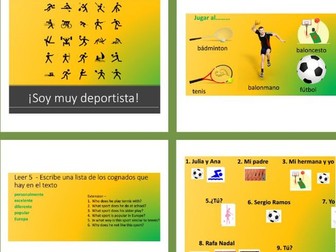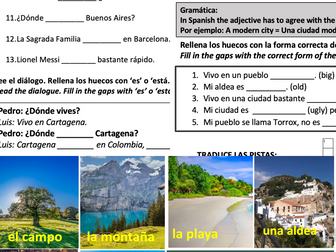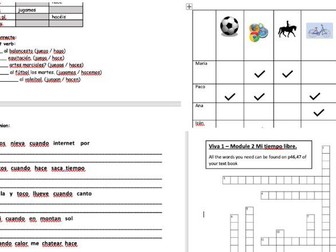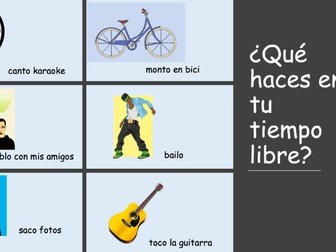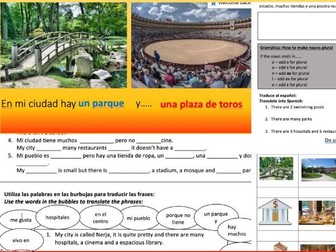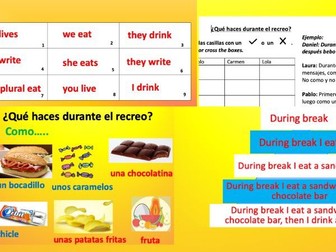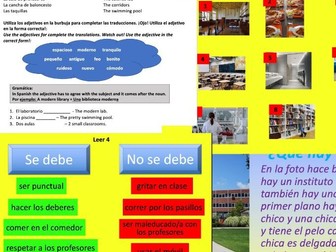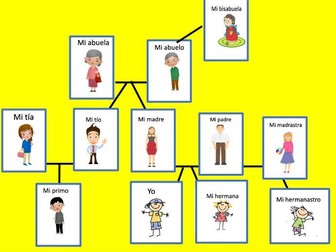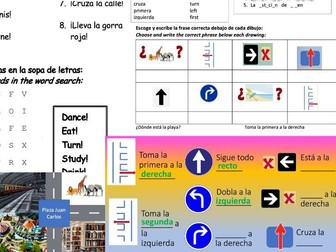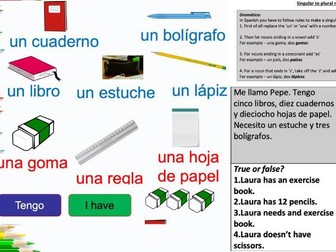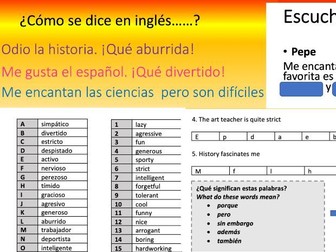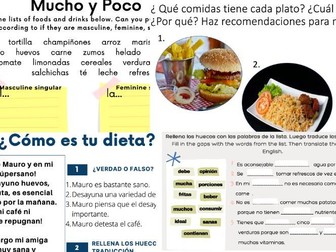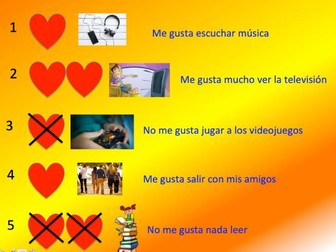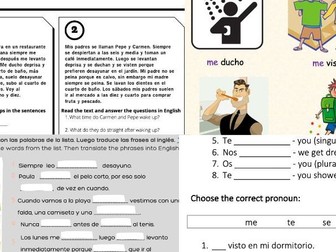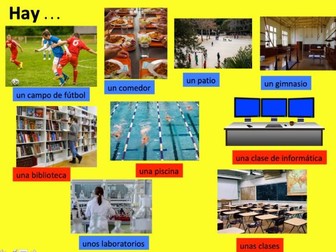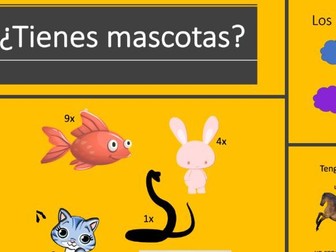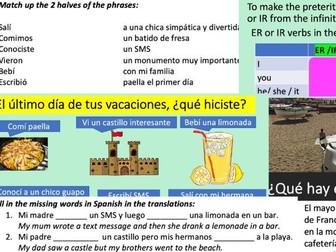Claro 1 p54/55, 3.2 Soy muy deportista
<p>This resource goes alongside Claro 1 p54/55 3.2 ‘Soy muy deportista’. The power point introduces the vocabulary for the different sports, goes through the first reading exercise and then has an activity to practice which sports go with ‘jugar’ and which ones go with ‘hacer’. This is followed by the introduction and practice of the 2 verbs, then the listening exercise from the text book and a game in twos or threes to practice the grammar. The answers to Leer 5 are presented, alongside an extension activity. As a plenary there is a slide to practice the vocabulary for sports and the verbs in the different forms.<br />
The accompanying worksheets range from a simple jumbled letter activity for the sports, to a differentiated reading comprehension sheet which uses adverbs of frequency and opinion words. There is also a crossword to practice the verbs, a sheet specifically to reinforce the use of ‘jugar’ and ‘hacer’ and the worksheet for the verb game.<br />
Lastly there is an exam style photo card activity which starts with a simple photo description to more complicated questions about pastimes and physical descriptions in order to encourage students to use the vocabulary they have learned in earlier units.</p>
